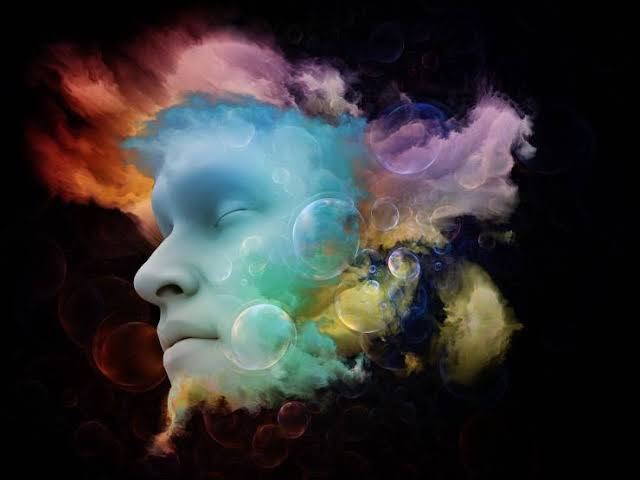Dreams are foams? Not at all. Anyone who thoroughly examines the nocturnal head cinema can learn something about themselves. Because dreams not only reflect the basic patterns of one’s own person – they can also be influenced.
“What was that supposed to mean? In the morning after waking up, many people are confused. The nocturnal pictures from the head cinema make only limited sense – sometimes they seem completely chaotic. Many experts for sleep and dream research agree: dreams reflect experiences from everyday life. The things that are important to us also occur in dreams, explains psychologist Michael Schredl from the Central Institute for Mental Health in Mannheim.
However, this connection to everyday experiences is not always directly recognizable, the dreamers have to look a little deeper. “It’s not about the images themselves, but about the basic patterns,” explains Schredl. By this he means the strengths and weaknesses of a person, their abilities. These patterns are recognizable in the dream: What tasks do you have in the dream, how do you act? “The watch personality and experience are reflected in the dream,” says Schredl.
For Brigitte Holzinger, head of the Institute for Consciousness and Dream Research in Vienna, feelings play a decisive role in dreaming. “Dreams are feelings depicted in moving images,” says Holzinger, who has published several books on the subject. Those who deal with dreams and learn to read them can evaluate the feelings from the night and grow from them. “The dream is something like a little psychotherapy.
What does the dream ego go through?
In addition to this theory, there are a number of others. Some behavioural researchers are also of the opinion that dreams have no function or meaning, explains Hans-Günter Weeß, head of the Interdisciplinary Sleep Centre at the Pfalzklinikum Klingenmünster. Some psychoanalysts, on the other hand, suspected that subconscious desires or impulses expressed themselves in dreams. However, this thesis is no longer supported today, said Holzinger.

Changing the nightmare into a harmless story
They have to deal with the dream to do that. One method is Imagery Rehearsal Therapy. “The basic idea is to consider a coping strategy for the nightmare situation,” says Schredl. In the waking state, those affected consider an alternative solution for the nightmare and repeatedly imagine this variant. The goal is to transform the nightmare into a harmless story.
Another possibility is the technique of lucid dreaming. This means to become aware in your dream that you are dreaming, explains Holzinger. Then you can influence it. The lucid dreaming is trainable, for example by relaxation techniques or hypnosis. It is important to recognize the underlying feelings and experiences in nightmares and to deal with them in order to develop further, emphasizes Holzinger. “The nightmare also wants to draw our attention to something and basically heal us.
A physiological explanation is that dreams are important for brain development and maturation. This theory is derived from the fact that REM sleep is extremely high in newborns. REM is derived from Rapid Eye Movements and is one of the four sleep phases. “That’s where we’re hardest to wake up,” explains Weeß. The brain is highly active during this phase. The dreams are very emotional – both positive and negative. The dreams from the non-REM periods, on the other hand, are rather factual in nature, which is why many people do not remember them either. But: “Dreaming takes place in all phases”, emphasizes the psychologist Schredl.
Basic pattern in dream classics
Michael Schredl works at the Central Institute for Mental Health in Mannheim, where he is head of the sleep laboratory and Germany’s leading dream researcher. He interviews people on dream topics and investigates the nocturnal activity of the brain: “Typical dreams are about the basic themes of waking life that occur in one form or another in almost all people,” he says. “The illustration is individual, but a basic pattern can be recognized. He does not believe in symbols. For example, that a black cat stands for something specific.
According to Schredl, the exam dream is about the thought: “I feel badly or not at all prepared for a situation”. The dream falls back on experienced situations such as the Abitur in order to clothe the cognition. The bad preparation does not have to correspond to reality. The dream expresses the fear of not being able to perform a service or demand.
Do dreams help to process problems?
According to Schredl, it is unclear whether this already happens during the dream. What is certain, however, is that the reflection on the dream helps. Fear, Schredl says, “becomes the more unpleasant the more I dodge it. I also have to look my fear in the eye when I am dreaming”.
People with a higher level of education more often dream of exams, Schredl says, possibly because achievement also plays an important role in their waking life. Remarkably, people dream of exams that are never rattled through.
The search for a toilet
Schredl has collected many thousands of dreams, even his own. It is not unusual for dreamers to report that they are looking for a toilet, but either it is occupied, broken, heavily soiled, or cannot be found: “A simple dream,” says Schredl. The motif is illustrated: “I have a need that is made more difficult by the current circumstances. Which need is at stake is, of course, individual.”
Typical dreams can give impulses for the waking life. Those who think about them can find clues. Example of neglected pets: For a long time people have forgotten to feed them. Schredl’s impulse: “What am I neglecting from childhood? Is something dear, for which I am responsible, too neglected?






